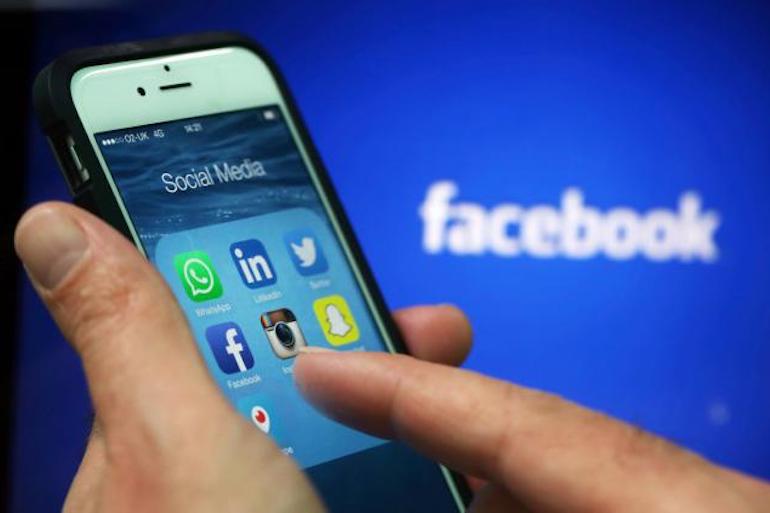In the past, online shopping has gone a bit like this: you need something, you search for it, you buy it. Functional? Yes. Inspiring? Not really.
But machine learning and the impact of the Covid-19 pandemic on e-commerce are changing all that. In the same way as Facebook’s News Feed defined the personalized format with an infinite stream of updates based on users’ interests almost two decades ago, Discovery Commerce is personalizing the shopping experience on our platforms.
Discovery Commerce inspires users to products and brands that align with their tastes, which they might never have come across otherwise. Rather than people finding products, discovery commerce enables products and brands to find people, hence tapping into new pockets of consumers they would have never reached before, and turning marketing into a revenue opportunity. Similar to News Feed, Discovery Commerce is a fluid, continuous system that improves over time as our platforms get to know users better.
It’s also collapsing the traditional purchasing funnel: customers can discover and buy products within seconds – meaning the new audiences businesses are able to connect with are more likely to make it through checkout, especially when the path to purchase is frictionless.
Take the Acai Spot for instance. After completing my morning fitness class, I was scrolling on my feed to catch up on the latest news and I came across a mouthwatering picture of a healthy acai bowl from a shop I had never heard of – The Acai Spot. With just a few clicks, I managed to customize my bowl, order it and get it at my doorstep in less than 30 minutes. I’d never seen them before, and I wouldn’t have known how to search for them. They found me and it made my day! Another discovery was the pitusa sold by SandDollar shop, a very nice and stylish beach dress that also made its way to my stories and again with just a few clicks, I ordered it and was ready for the summer!
These discoveries reminded me of browsing in my local fashion boutique. The owner has a great eye, knows her customers well and curates the labels she sells beautifully – her shop is like a candy store of colour and texture. I might go intending to buy a t-shirt or a skirt, but I’ll invariably come out with something completely different.
This kind of serendipitous experience is happening more and more online after a year of lockdowns during which physical shopping has been shelved: 82% of people have told us they now find new products on Facebook’s platforms.
And as well as small brands like The Acai Spot or SandDollar, global businesses, that had to pivot during the pandemic, are also connecting with new digital audiences using innovative formats. During Ramadan, Maggi Arabia, partnered with Facebook, to remind everyone that while Covid-19 may have changed our lives, the essence of Ramadan remains the same and sharing meals is at the heart of it. The brand worked with influencers to tap into the rising audiences on digital and inspire them with new dishes and cuisines on a weekly basis. It used innovative channels where people are spending more time such as IGTV videos; Live Rooms; Instagram Stories and of course Facebook and Instagram’s feeds to promote its messaging. The brand also used creative executions built around Facebook’s Shop Now features to retarget those who engaged with the campaign. The campaign delivered brilliantly well especially with the Gen Z and Millennials on brand metrics as well as purchase intent – 6x the benchmark.
Even big-ticket items like cars are finding fresh opportunities for digital sales, with over 50% of people saying they’d buy a car online – something few would have predicted a year ago.
It’s a behavioural shift that isn’t unique to shopping. It’s happening in other sectors where there’s been an explosion of content and people welcome the experience of curated discovery, too.
Netflix is one. Its recommendation feature curates its 15,000 titles according to what it’s learned about users’ viewing tastes – 80% of content on the channel is now driven by recommendation. It introduced me to Call My Agent recently, a funny, feel-good series about a Parisian talent agency that I hadn’t heard of, and provided some much-needed escapism during lockdown. It’s the same with Spotify: its Discovery Weekly engine predicts the tracks you might want to hear based on your history – it’s already driven 2.3bn hours of listening.
The new, older consumer
You might think discovering new products online is a behaviour we’re only seeing among digital natives and millennials, but the Covid-19 pandemic has changed everyone’s shopping habits fundamentally – and it’s closed the digital gap between the younger and older generations. On average, 85% of internet users globally are shopping online, including over 80% of Gen X and Boomers. And mobile is now the main screen not just for teenagers and millennials, but for all adults: the fastest growth in mobile commerce is among people over the age of 40.
Of those Gen X and Boomers, 44% and 30% respectively said they are spending more time shopping online because of lockdown measures. Targeting these burgeoning groups is easy on Facebook’s platforms, and they represent a largely untapped online opportunity for marketers that’s here to stay.
A recent survey by PwC found that 53% of Middle East consumers are increasingly shopping online and 71% are staying connected during the Covid-19 pandemic.
Marketing beyond borders
The Covid pandemic has also prompted brands – both those that have pivoted from predominantly bricks-and-mortar models and those born online – to look beyond their domestic audiences.
Squatwolf, a UAE-based gym wear brand found international success and achieved a 2.5X higher conversion rate by winning local and global customers with Facebook’s cross-border business solutions. Since launch, this premium gym wear born in the UAE has successfully expanded to sell in 120 countries around the world and used a solid localization ad strategy to increase profitability. The company not only tripled its conversion rate but also tapped into new audiences and increased average basket size.
Another brand that has proved the value of personalisation at scale is Neutrogena, one of Johnson & Johnson’s renowned skincare brands. It created over 300 shoppable assets which were disseminated using broad targeting in a 2020 campaign for Saudi Arabia that relied on machine learning to deliver the right creative to the right person at the right time. The campaign delivered an impressive 95.5% increase in Neutrogena units sold in Saudi Arabia and a 75% increase in sales value.
Experiential creative
Creative that helps bridge the gap between physical and digital shopping is another important component of Discovery Commerce. The e-commerce experience offered by the brands that are engaging new audiences most effectively is immersive and interactive. Level Shoes, a globally recognized retail concept dedicated to the world of designer footwear for Women, Men and Kids, used Augmented Reality ads in UAE during Ramadan 2021.Facebook's augmented reality enabled Level Shoes to spread awareness with engageable content that resulted into a significant impact on brand recognition.
Luxottica Group, the world’s largest eyewear company, is an inspiring example. As a key part of its pivot to e-commerce last year, it launched a campaign that combined broad interest targeting with ground-breaking creative. Partnering with Smartly.io, the brand created a range of innovative video and static ads that used augmented reality to allow users to try on RayBans, bringing a crucial benefit of physical shopping to life online. The strategy helped the brand achieve a return of 5.6 times its ad spend, plus year-on-year growth of over 600% across e-commerce.
Watch and learn
One of the many benefits of this revolutionary new form of e-commerce is its ability to evolve. Marketers should leverage their digital tools to learn and sharpen their Discovery Commerce campaigns in the same way as the AI that enables it is constantly informing itself about its users and improving its targeting as a result. Combine this approach with cutting-edge, engaging creative; out-of-the-box targeting and frictionless and spot-on customer experience , and you’ll find there’s never been a better time to reach new customers and drive conversion.
Opinions in this piece belong to the author






